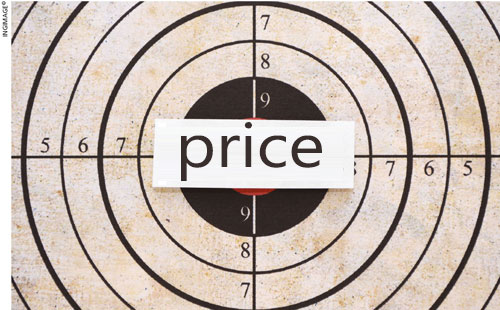PRICING STRATEGY
THE PRICE-VALUE CONUNDRUM
Dr. Muneer Muhamed underscores the importance of pricing strategies in biz
Among the four Ps of marketing, price is arguably the most problematic aspect for sales and marketing professionals. It’s a seemingly never-ending equation… at least for most executives. Customers tend to look for the lowest possible cost while marketers aim to charge as high a price as possible.
But what does price really mean to the customer who walks into a store?
Numerous research studies have indicated that when price is the only information customers are privy to, different prices are associated with varying levels of quality. However, when other types of information such as brand names, features and benefits are introduced, there’s little evidence to suggest that price equals quality.
If I were to ask you to think about a smartphone, a particular price may come to mind. And if I then said something along the lines of ‘it’s an iPhone with several new features,’ a different price (probably one that is higher) would come to mind. Indeed, price is a matter of perception.
We’re aware that in most instances, quality will cost more. If we want a quality product, we’ll have to pay a higher price in most if not all cases.
Have you ever watched the advertising pitches on TV shopping channels?
One such commercial may run as follows…
The presenter spends 10 minutes demonstrating one or two knives that can accomplish several tasks. Then he announces their prices: say Rs. 790 or even 930 rupees. This may seem high… but wait; if you order immediately, he’ll throw in three vegetable knives, a corkscrew blade, melon ball maker, juicer knife and grapefruit knife – all for free. So instead of a set of knives for 930 rupees, you purchased two knives for Rs. 930 and received seven free. What a deal!
Do you see what happened here?
It’s not the price of the knives but how it was presented that made a world of difference.
You need to be extremely creative when it comes to presenting competitive pricing options. Broadly speaking, there are three pricing strategies that brand managers may consider.
Brands such as Rolex, Mercedes-Benz, BMW and Apple take pride in the fact that they’re never in the lowest price range of their respective categories. They use the principle of premium pricing to convince customers that they’ll become part of an elite group to own these products.
For example, whereas regular branded shirts may be available at Rs. 1,500-2,000, a typical premium branded shirt is priced at 4,000 rupees and above.
It could be difficult for small businesses to opt for a premium pricing strategy but it’s not unusual in certain categories. For instance, a Colombo based chocolate maker may command a premium price for high quality custom-made products.
So how much value do customers expect to gain
if they were to purchase your products or services?
When they consider all the benefits of buying a product, there’s a perception that the price demanded is a fair trade for the value delivered. This is the best strategy when it comes to consumer sales. Remember the following hard rule when developing this strategy: every feature of your products or services must have a corresponding benefit; otherwise the strategy would fail.
A feature refers to what a product has; and a benefit is what a product does or customer perceives. Features alone do not translate into value for consumers. A benefit implies an improvement derived from using a product. The more benefits that are enjoyed by consumers, the easier it is to justify the price and ensure sales.
In the case of ‘value in use’ pricing, customers should be looking at the savings derived from a product over the long haul.
A computer with a word processor may be costlier than a typewriter. But in the long run, a secretary would be more productive and his or her work will seem more professional. Energy saving LED lights can cost more but they use less energy and last longer. Consumers often want a quick fix at a low price and tend to be reluctant to examine the savings over time. Toyota has been a master of this art with its ‘cost of ownership’ concept.
If you experience sweaty palms and a dry mouth when the time comes to present the price to a prospective customer, you’ve clearly not convinced yourself about the value of your offering. Until you’re genuinely convinced that the price represents a fair value, you will not be able to make the sale. So make a list of features and benefits relevant to each and every product that you carry. Assign a price to each benefit if necessary.
Price becomes a problem only if you make it out to be so – people make purchasing decisions based on emotions and use logic to justify their feelings. That’s why the benefits are so important. Make a customer’s life easier, more economical, longer or less stressful – and you’ll be guaranteed a sale.
Show them the value… and they’ll always pay!





